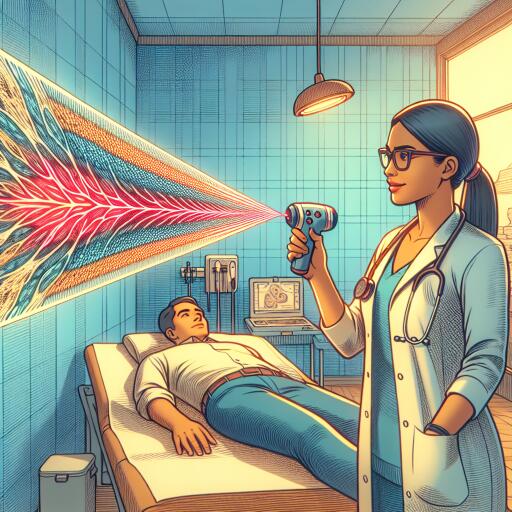Bringing Laser Speckle Imaging to the Point of Care
In the rapidly evolving world of medical imaging, one technology stands out for its unique ability to visualize blood flow in real-time: laser speckle contrast imaging (LSCI). Traditionally, LSCI has been a staple in research environments, relying on bulky benchtop setups that, while effective, are not suitable for the dynamic settings of clinical care. However, the landscape is changing. Thanks to groundbreaking efforts by research teams, including those led by Francesca Bonetta-Misteli and Christine O’Brien at Washington University in St. Louis, laser speckle imaging is stepping out of the lab and into the hands of clinicians through the development of hand-held and wearable systems.
The challenge with miniaturizing LSCI technology cannot be understated. One of the core issues stems from the sensitivity of speckle contrast measurements to movement. As the imaging system moves, it increases blurring in the images, complicating the accurate visualization of blood flow. This is a significant hurdle because, for LSCI to be practical in a medical setting, the equipment not only needs to be portable but also must maintain high image quality despite the inevitable movements that come with hand-held use or wearables.
To address these challenges, researchers have embarked on a mission to design and create lightweight, compact devices. Hand-held LSCI devices, for example, must be easy to lift and maneuver around a patient without causing strain to the operator or compromising the quality of the images. Similarly, wearable LSCI systems are being developed with the vision that users can wear them without interference to normal activities, a step that could revolutionize continuous monitoring of blood flow in various clinical scenarios.
A critical component of this endeavor has been the meticulous selection and characterization of camera and laser components. The delicate balance between maintaining the portability of these devices and their ability to capture high-quality images hinges on the integration of advanced optical and computational components. For untethered devices — those free from the constraints of cables and fixed positions — this challenge extends to incorporating small, efficient computational units and battery modules that do not add undue bulk or weight. Furthermore, an intentional hardware design that considers ergonomics and ease of use is essential to ensure these innovative devices can be seamlessly introduced into busy clinical environments.
The promise of these hand-held and wearable LSCI systems is immense. By bringing laser speckle imaging directly to the point of care, clinicians can gain immediate insights into the microvascular health of their patients. This could be particularly beneficial in settings where rapid assessment of blood flow can inform critical treatment decisions, such as in emergency medicine, surgery, and chronic wound management. Moreover, the development of these portable systems opens the door to new research opportunities in fields where real-time blood flow visualization was previously unattainable outside of a laboratory.
While the road ahead may still hold technical challenges, the progress made by researchers in making LSCI technology more accessible and practical for clinical use is a testament to the transformative potential of biomedical engineering. As these portable systems continue to evolve, they hold the promise of not only enhancing patient care but also broadening the horizon of medical research.
As we stand on the cusp of this new era in medical imaging, it’s clear that the dedication and innovation of researchers around the globe are paving the way for a future where advanced technologies like laser speckle contrast imaging can be utilized wherever they are needed most — at the bedside, in the operating room, and beyond. The path to bringing LSCI to the point of care is a journey of technological advancement and clinical collaboration, signaling a bright future for healthcare and patient management.










